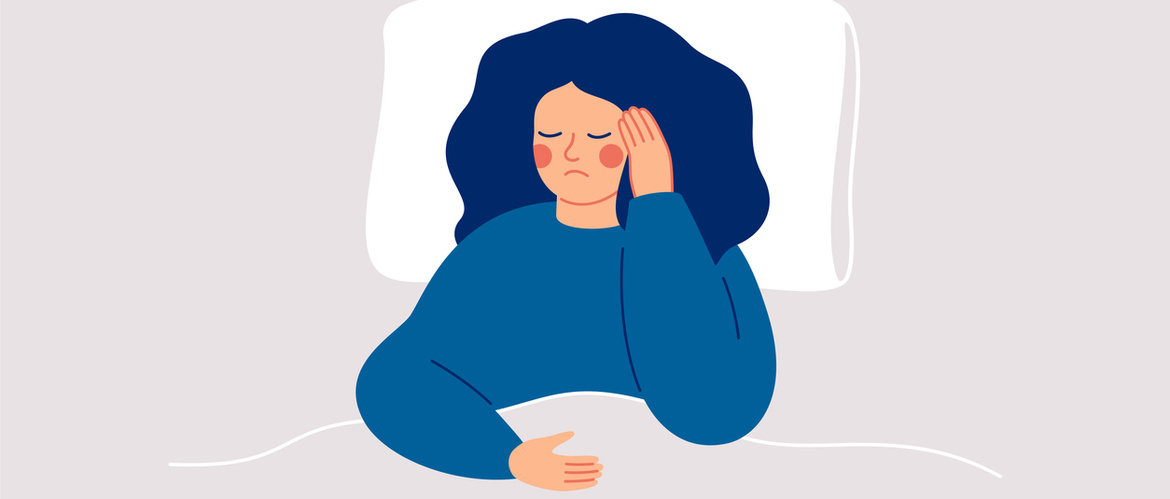
Choose a channel
Check out the different Progress in Mind content channels.

Progress in Mind

In a satellite symposium at #WCN2021, three leading experts discussed recent insights into migraine mechanisms, burden, and the prevention of disease progression. Professor Cristina Tassorelli, Dr Patricia Pozo-Rosich, and Professor Peter Goadsby, examined research that shows while migraine poses a major burden, migraine can improve for half of patients in the long term. A problem for physicians is how to identify patients for whom the disease will progress. However, there is now good evidence for reduction in migraine frequency and improvement in medication overuse with appropriate preventive treatment.
Migraine is a common, chronic neurological disorder resulting from head pain along with sensorial, gastrointestinal, cognitive, and other system involvement, making migraine the second most disabling disease globally.1
What changes happen in the brain with migraine?
Migraine is a complex disorder of multiple brain regions with wide ranging clinical presentation. Dr Patricia Pozo-Rosich, Vall d’Hebron University Hospital, Barcelona, Spain, explained that between attacks, the migraine brain is characterized by a lack of habituation of evoked responses to repeated stimuli. This abnormal processing of information reaches its peak a few days before an attack and normalizes during the attack at a time when sensitization may manifest.2 Frequent attacks lead to dynamic anatomical and biochemical changes in the brain.3
Frequent migraine attacks lead to dynamic anatomical and biochemical changes in the brain
Are the brain changes seen in migraine reversible?
On a positive note, Professor Peter Goadsby, Kings College London, UK highlighted studies which show no effect of migraine status on cognitive decline and no increase in white matter hyperintensity over time.4-6 In fact, a recent study shows that over 10 years migraine frequency reduced in nearly 50% of patients followed.7
Can we predict migraine progression?
Professor Cristina Tassorelli, University of Pavia, Italy, explained that every year around 3% of people with episodic migraine (EM) experience progression to chronic migraine (CM).8,9 In most patients the process evolves over months or years, and a spontaneous pattern of reversal is also possible.
Every year around 3% of people with episodic migraine experience progression to chronic migraine
Factors responsible for migraine progression include internal (genetics, disease severity, sexual hormones, depression, comorbidities), external (acute medication, low education, alcohol intake, lifestyle, inadequate treatment) and mixed factors (epigenetics, stress/trauma).10
The evidence for predictors of transformation of EM to CM is high for headache day frequency ≥10 days/month with a 6-fold increase in risk, compared with headache day frequency ≥5 days/month with a 3-fold increase in risk, and there is an 8-fold increased risk of transformation with medication overuse albeit with low level evidence.11
High headache day frequency and medication overuse predict transformation of episodic to chronic migraine
What is the goal of migraine treatment?
A major task for the physician is to reduce the frequency and intensity of attacks and to prevent disease worsening over time. Migraine treatment requires a multi-step approach of corrective steps and pharmacological treatment with acute, preventive, or mixed treatments.12 A corrective approach involves the identification and removal of triggers and aggravating factors, lifestyle optimization, and correction of postural abnormalities and muscle contractions. For acute treatment the oral triptans, gepants, and ditans are associated with high-level efficacy, while among preventives a high level of evidence for efficacy is afforded by the calcitonin gene-related peptide (CGRP) monoclonal antibodies.13
Treat patients appropriately to avoid migraine progression and medication overuse
Dr Pozo-Rosich concluded by showing recent evidence that CGRP inhibitors are effective in both patients with CM and medication overuse, demonstrating clinical improvement with reduction of migraine frequency and improvement in health-related quality of life.14
Educational financial support for this Satellite symposium was provided by H. Lundbeck A/S.
Our correspondent’s highlights from the symposium are meant as a fair representation of the scientific content presented. The views and opinions expressed on this page do not necessarily reflect those of Lundbeck.
1. Vos T, et al. Lancet 2017;390:1211–59.
2. Coppola G, et al. J Headache Pain 2013;14:65.
3. Pozo-Rosich P, et al. Cephalalgia 2021;41:613–30.
4. Kurth T, et al. BMJ 2010;341:c3659.
5. Hamedani AG, et al. Neurology 2013;81:1308.
6. Rist PM, et al. BMJ 2012;345:e5027.
7. Caronna E, et al. Headache 2020; 60:916–28.
8. Manack AN, et al. Curr Pain Headache Rep 2011;15:70–8.
9. Lipton RB. Neurology 2009;72(Suppl):S3–7.
10. Buse DC, et al. Headache 2019;59:306–38.
11. Xu J, et al. Cephalalgia 2020;40:503–16.
12. Ashina M, et al. Lancet 2021;397:1505–18.
13. Lipton RB, Silberstein SD. Headache 2015;55(Suppl 2):103–22.
14. Tepper SJ, et al. Neurology 2019;92:e2309–20.